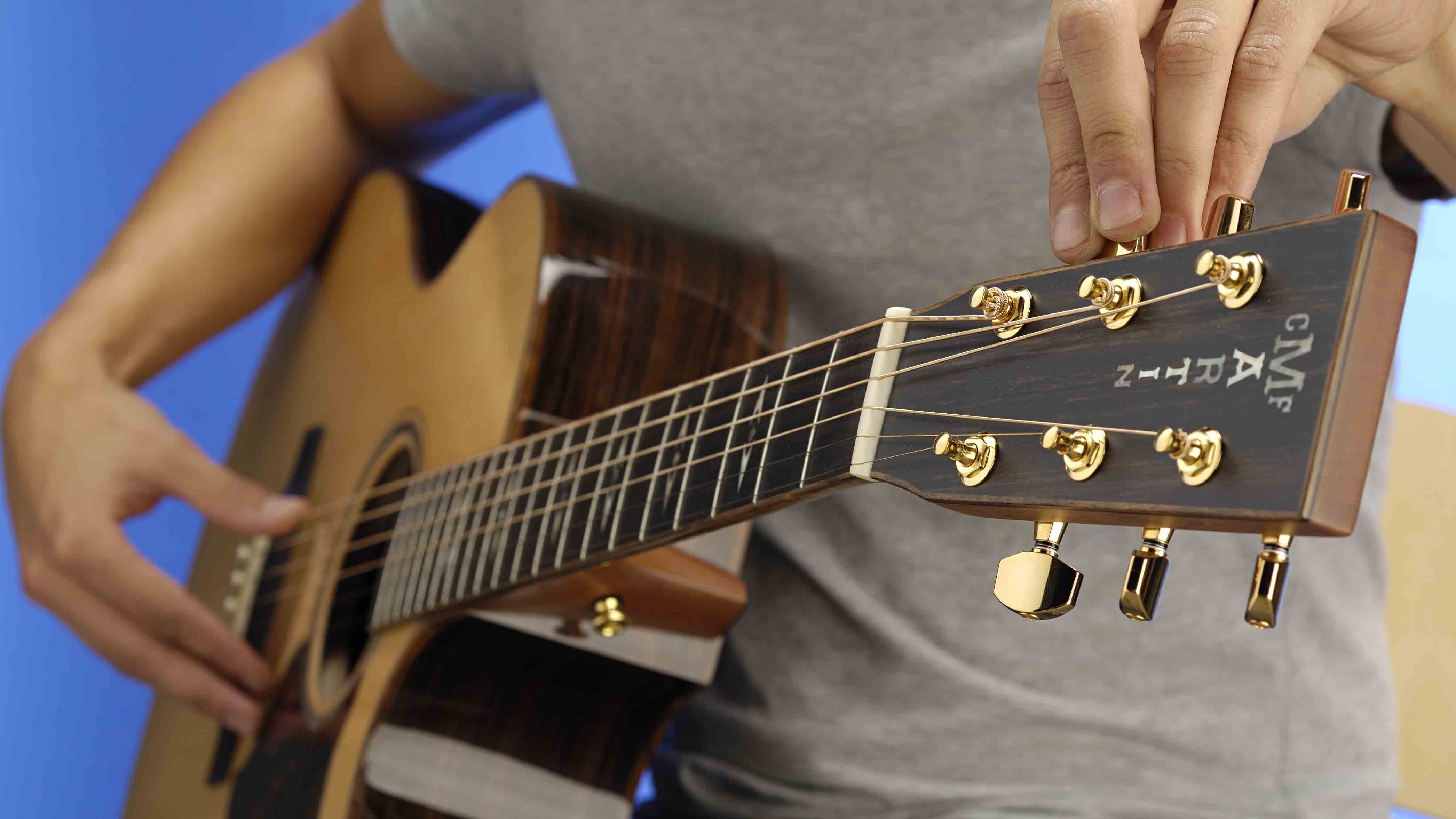

This is worth bearing in mind if you are plucking a Bass loudly, inertia might be making the notes slightly sharp. String inertia can lead to some confusion if tuning a guitar by ear. It can also apply to a lesser extent to the electric and acoustic guitar’s thicker strings. the thicker the string) the more inertia it has, so the Bass guitars strings can be affected. In this case the strings initial resistance to the change of direction when plucked causes it to tighten slightly and make it go temporarily sharp. This is because of inertia, a physical body’s resistance to change of direction.

Inertia: If you play the low E string reasonably hard around where the pickup near the fret-board is, you may notice the dial goes slightly sharp then settles. A standard guitar tuner like the CA-30 an be used to tune a Bass. Standard tuning for a Bass is low E, A, D, G. The different tuning of the B string can play an important role in understanding the layout of the fret-board and how you can move scale and chord shapes around it (if you know the chords open E, A and D major then there’s a clue in how they look different yet can be regarded as the same shape if you consider the B string)Ī potential problem with the relative tuning method is the margin of human error might be times six by the time you have got to the high E string, so you would need good ears.īass Guitar: A Bass Guitar may not seem as likely to go out of tune, as all the strings are more sturdy and nickel wound, but the human ear is less tuned in to lower frequencies and it’s not always as easy to tell so it can be worth checking the tuning of your Bass. Rather than being tuned to the 5th fret of the G string it needs to be tuned to the 4th fret of this string (this tuning makes “barre chords” possible). The only exception to this method is the B string. You can work your way up through the strings tuning them in the same way.

Once the A string is in tune, its 5th fret can then be used to tune the D string. Providing that the low E string is in tune, we can play its 5th fret to give us the note of A and tune the open A string so it sounds the same. When you play the 5th fret of most of the strings, it gives the same note as the next string up played open. The diagram shows how the strings relate to each other. For this to work one string needs to be in tune already (usually the low E string) meaning you would need to use any of the previous methods to get this string in tune beforehand. This is tuning the guitar strings to each other.


 0 kommentar(er)
0 kommentar(er)
